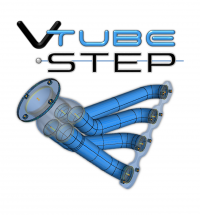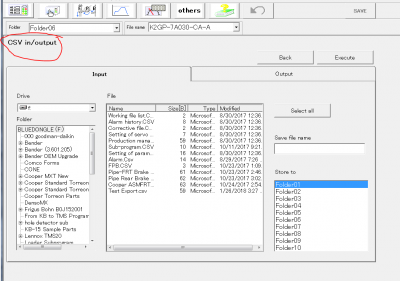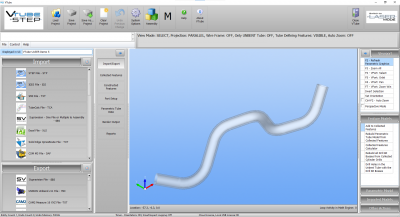Difference between revisions of "How to Export to a COMCO CSV File in VTube-STEP"
(→STEPS for EXPORTING a COMCO CSV from VTube-STEP) |
(→Import Solid Model) |
||
| Line 58: | Line 58: | ||
</td> | </td> | ||
<td> | <td> | ||
| − | [[image:vtube- | + | [[image:vtube-step_model_sample5.png|400px]]<br><br> |
</td> | </td> | ||
</tr> | </tr> | ||
Revision as of 18:01, 13 August 2021
|
This page describes how to export a COMCO CSV file from VTube-STEP.
You can use this feature to convert STEP file data into tube data and then export COMCO CSV data for bender set up.
Initial Template File Set Up at the COMCO
|
Before building COMCO CSV files in VTube-STEP, it is important to build template files from the COMCO control. |
|
|
Export each setup as a CSV file to a thumb drive or network using the CSV in/output screen. |
STEPS for EXPORTING a COMCO CSV from VTube-STEP
STEP 1 - Import a Solid Model or Manually Enter Part Data in VTube
Import Solid Model
|
You can import data using one of the import formats - like import a STEP or IGES model of a tube shown here. |
Collect Straights and Calculate
|
This shows after the collection process (where you select the straights), then calculating the centerline, diameter, and radii data from the model. |
Calculate Values
|
The XYZ centerline coordinates and LRA bender data is the resulting data from an import (this can be manually entered and adjusted also). |
|
Click on the Import/Export button in the Navigation Pane. Now click on the EXPORT Supravision button in the EXPORT section of the menu. |
|
STEP 3 - Click on SAVE in the Supravision Export Window
|
The Supravision export window lets you setup and save the Supravision file to any place on the disk or network. |
|
STEP 4 - Choose An Output Path in the Path Manager
|
The Path Manager lets you choose a path from a list of saved paths that you use often. Double click on the output path. |
|
STEP 5 - Save the New File
|
In the Save dialog, edit name, then press save. |
|
STEP 6 - Load the Supravision File Into the External Program
|
Other programs, like TubeCAD or CNC Bender controls, can import Supravision files to establish new parts. |
|
How to Move the SV Export Button to the Top
|
To make it easier to get to, you might want to move the Supravision export button to the top of the EXPORT list. |
|
Other Pages
- Back to the VTube-STEP page
- Back to the VTube-LASER page














